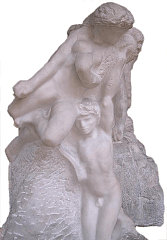Rodin Works: Orpheus and Eurydice |
|
This mythological
subject was very popular in Rodin's times. The sculptor, inspred by the opera
Orfeo ed Euridice from Christoph
Willibald Gluck from 1762 that was performed in Paris by the end of the
19th Century again, turned to this motif in the 1880's. Re-using the
body of Paolo as featured in 'Fugit Amor',
he had by 1887 created Orpheus's torso and head.
According to Georges Grappe, the first group
was composed in 1892, although some contemporaries dated it 1894 -
probably mixing it up with
'Orpheus and Eurydice Leaving Hell', executed in marble in 1893 for the American
collector Charles T. Yerkes. This latter version, purchased by Thomas P.
Ryan on 22 January 1910 and presented to the Metropolitan
Museum in New York, shows a walking Orpheus with his left hand before his eyes, followed by Eurydice. The male figure is combined with the female body of 'The
Martyr', which also appears in 'The Gates of
Hell', 'Avarice and Lust', and 'The
Fall of Icarus' The original group, with Eurydice hovering over the
right shoulder of the Orpheus figure, was enlarged in 1900 by LeBossé and
sent off to the exhibition in Prague in Spring 1902. According to Lynne
Ambrosini, the Eurydice character must have been removed from the group
between this date and 1908, when a solitary plaster of Orpheus was
exhibited in Paris. The massive lump of material underneath the lyre, that
once had functioned to counterbalance the weight of Eurydice and so
stabilize the top-heavy group, was left in place, indirectly reminding of
the once united couple. The now isolated male figure, named 'Orpheus Imploring the Gods', shows the singer in the moment he realizes that he will never see his lover again. The brutally severed hand of Euridyce on the harp, remnant of the former group constellation, underlines the tragedy of this situation.
In 'Orpheus and the
Furies', the rather coincidental juxtaposition of the 'Kneeling Fauness' and
'The Martyr', as seen in the tympanum of 'The
Gates of Hell' '
- is employed again by Rodin to present the last stage of Orpheus's
fruitless quest. Changing the gender of the kneeling figure, he
shows a rather frail Orpheus cracking under the weight of the raging
Maenads.
|
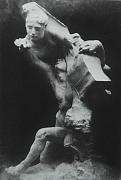 In
Greek mythology, Orpheus, son of the God of
music, Apollo,
and most skilled musician of all time tried to bring back
his wife Euridyce from the underworld - a task no mortal being ever tried
before. Orpheus managed to enchant Hades, ruler of the underworld, with
his music, so that Hades released Euridyce, on the condition that Orpheus did
not turn back till both lovers had left the underworld. But Orpheus
couldn't resist the temptation to see his beloved again and Euridyce
disappeared forever. Orpheus, arriving in the world of mortals again, in
his frustration and sorrow vowed he would never have anything to do with women again,
thus offending the Maenads, female followers of
In
Greek mythology, Orpheus, son of the God of
music, Apollo,
and most skilled musician of all time tried to bring back
his wife Euridyce from the underworld - a task no mortal being ever tried
before. Orpheus managed to enchant Hades, ruler of the underworld, with
his music, so that Hades released Euridyce, on the condition that Orpheus did
not turn back till both lovers had left the underworld. But Orpheus
couldn't resist the temptation to see his beloved again and Euridyce
disappeared forever. Orpheus, arriving in the world of mortals again, in
his frustration and sorrow vowed he would never have anything to do with women again,
thus offending the Maenads, female followers of 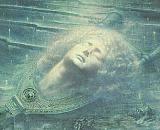 Dionysus, who attacked the
Thracean singer in their rage. After Orpheus was killed, these Maeneads,
also known as Furies, tore Orpheus's body to bits and cast these into the
sea. According to the myth, his head floated to an island where it was found still able to speak and sing; it was set up in a shrine where it continued to function as an oracle, until the day Apollo arrived and commanded it to be silent.
Dionysus, who attacked the
Thracean singer in their rage. After Orpheus was killed, these Maeneads,
also known as Furies, tore Orpheus's body to bits and cast these into the
sea. According to the myth, his head floated to an island where it was found still able to speak and sing; it was set up in a shrine where it continued to function as an oracle, until the day Apollo arrived and commanded it to be silent. 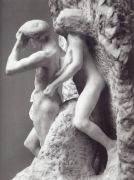
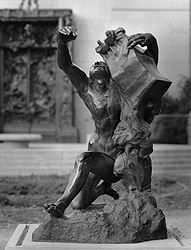 including variations like 'The Broken Lily' and
including variations like 'The Broken Lily' and 